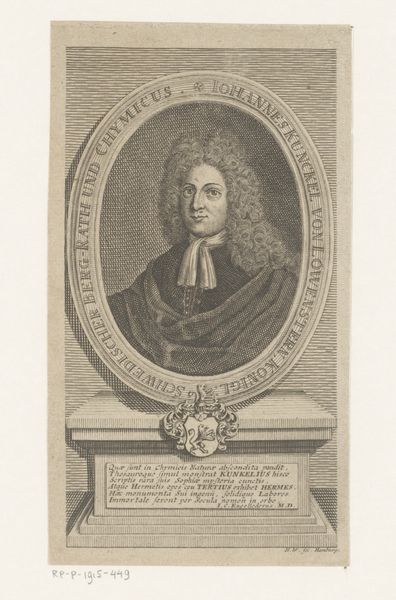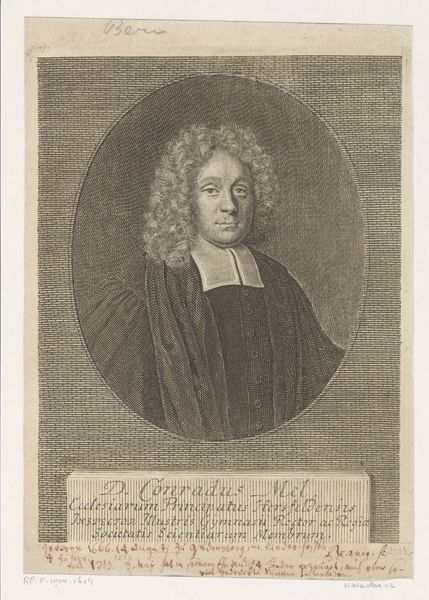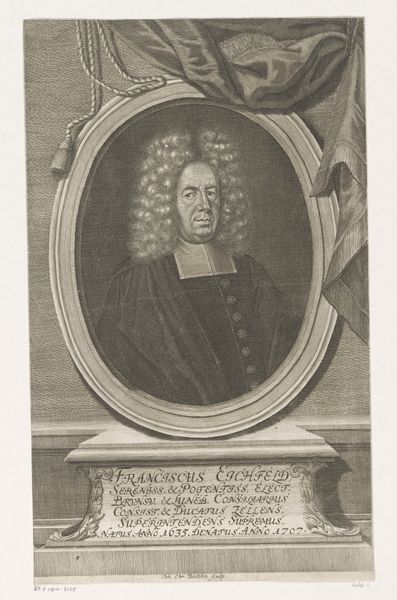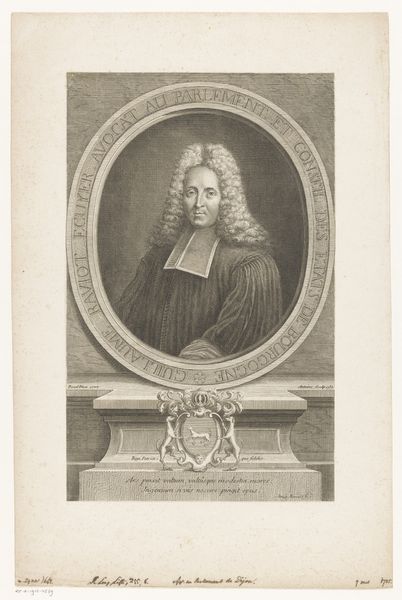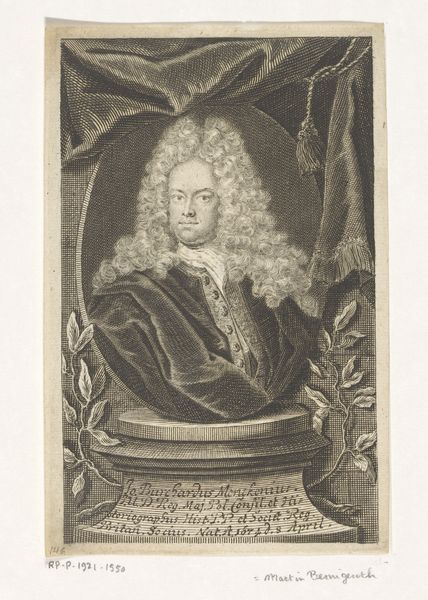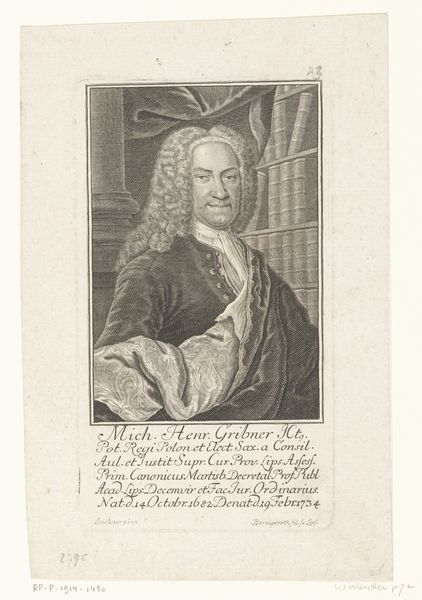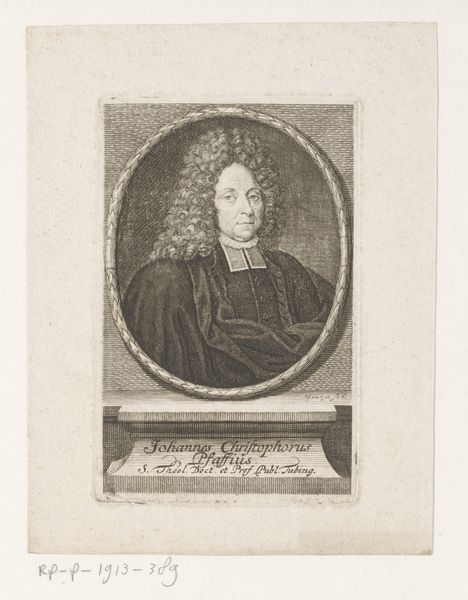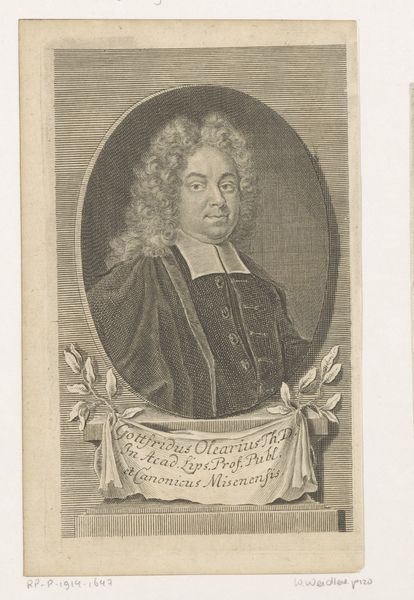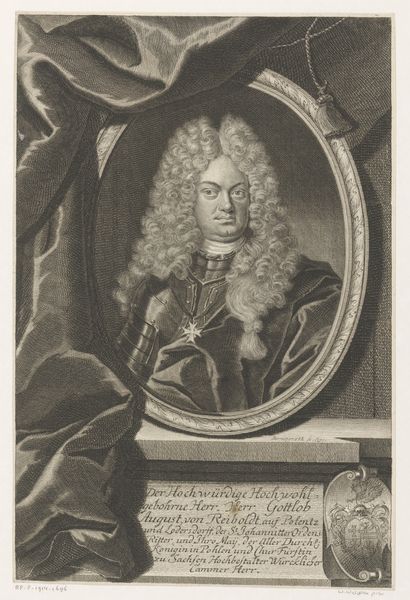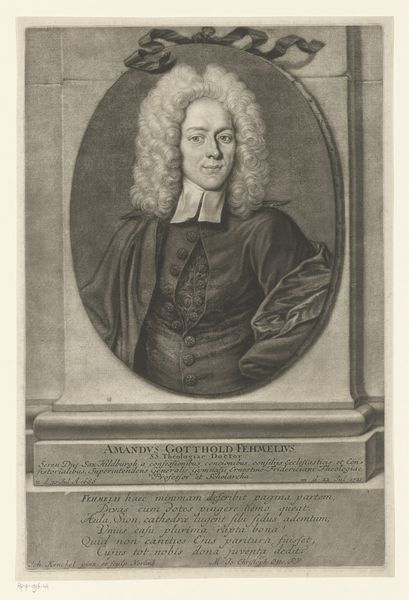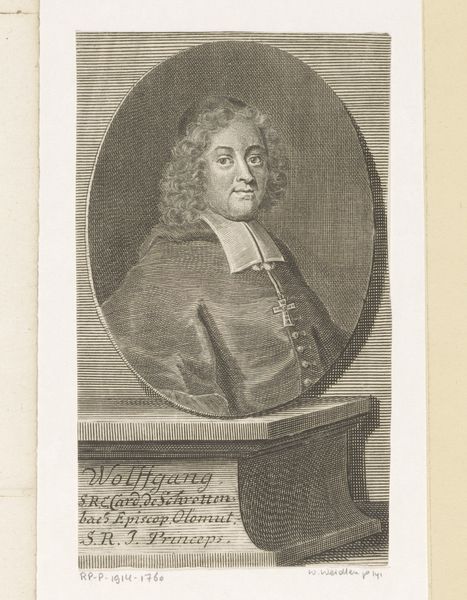
engraving
#
portrait
#
baroque
#
old engraving style
#
history-painting
#
engraving
Dimensions: height 154 mm, width 98 mm
Copyright: Rijks Museum: Open Domain
This engraving of Heinrich Pipping was made by Martin Bernigeroth, around the turn of the 18th century. The print is a potent illustration of the ties between religious authority and political power in the German territories of the Holy Roman Empire. The Latin inscription below Pipping’s portrait identifies him as a counselor on ecclesiastical matters to the King of Poland in the court of Saxony. His garb marks him as a man of the church. Pipping’s gaze is steady and self-assured, while the trappings of wealth and status, the draped curtain and elaborate wig, convey a sense of the sitter's importance within the social hierarchy. The image subtly reinforces this established order. To understand this work more fully, we might delve into the archives of the Saxon court, explore the writings of Pipping himself, and trace the networks of patronage that sustained artists like Bernigeroth. The meaning of this print, like all art, emerges from its specific historical context.
Comments
No comments
Be the first to comment and join the conversation on the ultimate creative platform.
